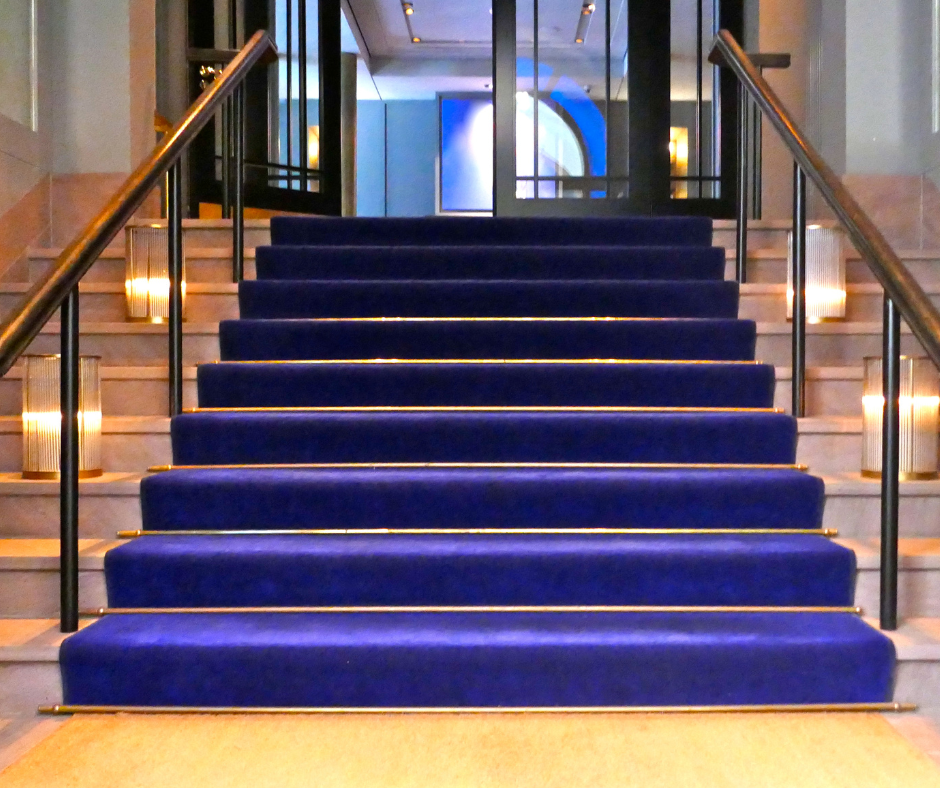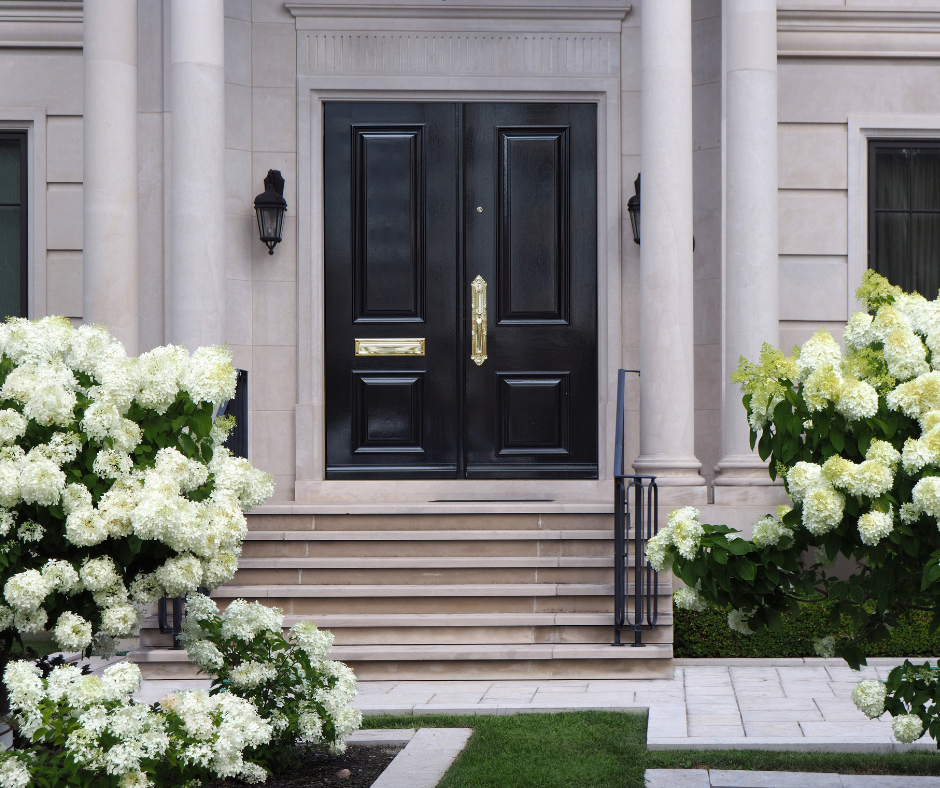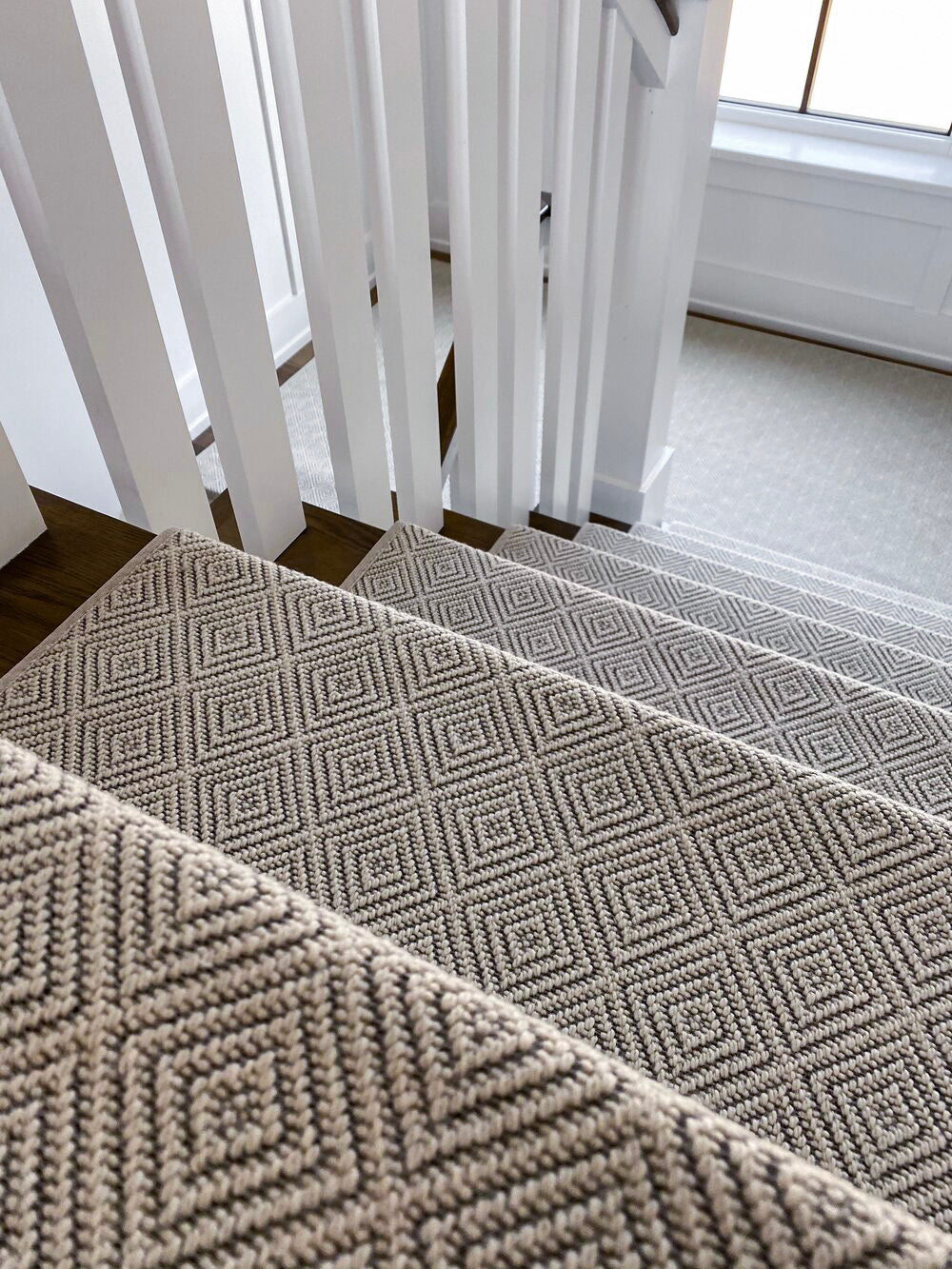Slippery steps, uneven surfaces, and weather-worn wood can turn a simple walk outside into a real hazard—especially for families with children or pets.
The recommended exterior stair tread depth is 10 to 11 inches to ensure every step is safe, stable, and comfortable.
In this guide, you’ll learn how to build better outdoor stairs, avoid common mistakes, and choose the right materials—whether you’re starting from scratch or adding carpet stair treads for traction.
Understanding Exterior Stair Tread Depth
Getting stair depth right is more than just numbers.
It’s about creating safe and comfortable steps for everyday use.
What’s the Minimum Tread Depth?
Most building codes require a minimum stair tread depth of 10 inches.
This is measured from the front edge (nosing) of one step to the front edge of the next.
Anything less can lead to tripping, missteps, or general discomfort when walking.
Why the Extra Inch Matters
While 10 inches meets the code, the recommended exterior stair tread depth is closer to 11 inches.
That extra inch gives more space for each footfall, creating a safer and more comfortable stair experience.
It’s especially helpful for people with larger feet, or households with pets and kids constantly using the stairs.
How Stair Tread Depth Affects Safety
Even small errors in tread depth can cause safety issues.
Uneven spacing or shallow steps can make stairs feel unstable and increase the risk of falls.
A consistent, code-compliant depth helps avoid accidents and makes stairs easier to navigate in all weather.
Adding carpet stair treads enhances safety even more.
These treads provide traction, reduce slips, and add a layer of comfort.
Just make sure the stair depth allows the treads to sit flat without hanging over.
How Deck Stair Tread Depth Impacts Outdoor Comfort
When building a deck, the stairs are more than a structural add-on—they're an extension of your living space.
Whether leading to a patio, garden, or pool area, the deck stair tread depth needs to be spot-on.
For outdoor decks, 10 inches is the baseline, but 11 inches is ideal.
The deeper the tread, the more comfortable each step will feel—especially when going barefoot or carrying outdoor gear.
Deeper treads also accommodate outdoor carpet stair treads, which help prevent slipping in rain or snow.
Factors to Consider When Choosing Tread Depth
Every household has different needs, but these key factors will help you decide the best tread depth for your stairs:
For Busy Families
More traffic means more potential for accidents.
Choose an 11-inch depth to give everyone—from toddlers to teens—a secure step.
For Aging Adults
Shallow stairs are harder to climb and easier to fall on.
A longer tread makes each step more manageable and reduces fatigue.
For Outdoor Environments
Weather plays a role too.
In areas with heavy rain or snow, deeper treads combined with non-slip carpet stair treads keep things safer year-round.
What the 7-11 Rule Says About Tread Depth
The 7-11 rule is a common building guideline that recommends each stair’s rise (height) be no more than 7 inches and the run (depth) be at least 11 inches.
This rule creates a comfortable and natural step pattern.
It reduces strain on the knees, improves balance, and lowers the risk of trips.
When you combine this rule with proper materials, you’re building stairs that work well for everyone.
The Importance of Material Selection
Your stair tread depth also depends on the material you’re using. Here’s what to consider:
Wood
A classic choice for most outdoor stairs.
Just make sure the treads are at least 1.5 inches thick for strength and stability.
Wood pairs well with carpet stair treads, giving you a soft landing on a solid base.
Composite
Modern and weather-resistant.
Composite materials often require precise cutting, so planning the right recommended exterior stair tread depth from the beginning is crucial.
Concrete
Strong and long-lasting.
Just be sure the treads are wide enough for anti-slip coatings or textured surfaces, especially in colder climates.
The Role of Stair Slope in Safety
Flat stairs might seem ideal, but they can collect water—creating a slipping hazard.
That’s why stair treads should have a slight slope of no more than 2% (around 1/4 inch per foot).
This small angle allows water to drain naturally, helping to keep your stairs dry and safe.
It’s especially important when using carpet stair treads, which can trap moisture if the surface underneath doesn’t shed water properly.
Using Carpet Stair Treads Effectively
Installing carpet stair treads on outdoor steps is one of the easiest ways to boost safety without sacrificing style.
Here’s how to get the most out of them:
-
Match the size to the tread depth. You want a tread that fits without excess overhang.
-
Use weather-rated adhesive or fasteners. This prevents the carpet from shifting during wet or cold weather.
-
Choose designs with traction. Look for treads that offer grip without being rough underfoot.
When your stair depth is right, carpet treads sit flush, look cleaner, and stay in place longer.
Common Mistakes to Avoid
Inconsistent Depth
Every step should have the same depth—no exceptions.
Even small variations can make stairs feel uneven and increase the risk of tripping.
Skipping Code Checks
Always check your local building codes.
Some cities or counties have stricter rules for outdoor stairs, especially on decks or in high-rain areas.
Choosing the Wrong Tread for the Depth
Using a 12-inch tread on a 10-inch stair can cause overhangs that look sloppy and feel unsafe.
Match the tread to the actual measured depth—not your estimate.
Tips for Building Long-Lasting Outdoor Stairs
-
Measure carefully and twice. The best build starts with accurate math.
-
Secure each tread fully. Loose treads are a safety hazard.
-
Plan for weather. Choose materials and finishes that handle rain, sun, and snow.
-
Add finishing touches. This could include railings, landings, or outdoor lighting for better visibility.
By getting the recommended exterior stair tread depth right from the start, you set up the rest of your project for success.
When to Hire a Professional
DIY is empowering, but sometimes stair building gets complex—especially with elevation changes or unusual layouts.
A contractor can help:
-
Ensure you meet local building codes
-
Avoid over/underestimating tread measurements
-
Professionally install custom stair parts like handrails or treads
Even if you handle design and materials yourself, bringing in a pro for the install may be worth the peace of mind.
Stepping It Up
At Oak Valley Designs, we know great design starts with safety and ends with satisfaction.
The recommended exterior stair tread depth of 10 to 11 inches helps create stairs that are easier to use, safer to climb, and more beautiful to look at.
Add in our premium carpet stair treads, and you’ve got a DIY solution that’s simple, stylish, and built for family life.
Whether you’re redoing a few steps or building from the ground up, we’re here to help you do it right.
-
Website: https://oakvalleydesigns.com/
-
Phone: 706.331.0315
-
Email: info@oakvalleydesigns.com
-
Address: 30 River Ct SW Bldg E Cartersville, Ga 30120




